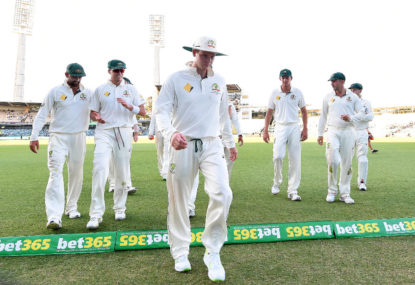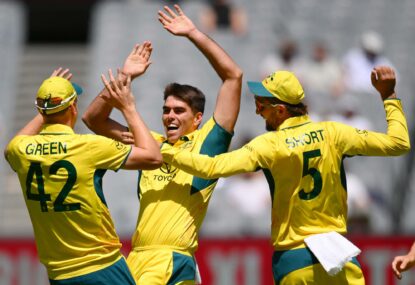So another year draws to an end that has seen the cricket calendar suffering from a combination of oversupply, three different versions of the game, and contests that are assembled in a way that the majority are justifiably meaningless.
This seems to be creating a disconnect between the sport and fans and at some point will threaten the sport’s credibility and viability if the status quo is maintained. Many international matches are played not only in empty stadiums, but many fans struggle to know of a series existence and/or of their relevance, even in the digitally-connected world we live in that is driving fan engagement.
In order to make world cricket the best it can be, the two aspects of the game that must be changed are the number of forms it is played and establishing consistent, annual global competitions.
With the financial adrenaline rush T20 provided over a decade ago, cricket has struggled to maintain its identity and relevance for the pre-existing forms of the game (Test and ODI) while accommodating the new (T20). Now that we have had over a decade to understand how three forms of the game can co-exist, the evidence is clear that the game would be much better served with two forms (or less) just like every other sport in history.
It is obvious that if you were to choose two forms of the game to move forward with you would select the tradition of Test cricket and the economic powerhouse of T20. T20 resonates more strongly with modern society in comparison the 1970s version of short form cricket.
The second aspect cricket must greatly improve is its scheduling. A common, and highly underrated, aspect of the most successful sports and competitions in the world is that their scheduling does not alter significantly from year to year.
America’s version of cricket, baseball, has its famous 162-game season that always starts at the beginning of April and ends with the World Series in late October. This has the added benefit of fans being able to remember statistical achievements and milestones of payers and teams more easily (also underrated aspect of fan engagement).
Ditto for the equivalent schedules for the NFL, world football, the NBA, tennis’ Davis Cup and grand slam tournaments, and golf’s majors and Ryder Cup. For cricket, the only consistent aspect of the calendar is the Boxing Day and New Years Tests in Australia and South Africa.
The rest of the year is filled with almost random contests in different forms that you would often have to wait until the event is 6-12 months out to find out more details on what is happening.
Ultimately your average Test cricketer might play 15 Tests, but the opposition and locations could vary greatly year to year meaning it’s impossible to determine the best nation and players at the end of the year.
The other aspect of Test cricket that often receives criticism is the stronger nations domination of weaker nations, resulting in a product that lasts 3-5 days but the results is known over after the first session. This has lead to many calling for Test-playing nations being divided into two groups of four.
To combat both of these issues, Test cricket should adopt the best elements of the baseball’s MLB (i.e. round robin format between fixed dates with a yearly winner) and tennis’ Davis Cup (i.e. global contest with promotion and relegation groups and a yearly winner).
An example ‘World Test Cricket Season’ could be in the form of top division of six nations and a lower division of four nations. Both divisions would play a round robin format of three Tests per round.
This would mean 15 regular Tests per year for the top division of six nations. Boxing Day would be the ideal date to start the annual competition with the final being played in mid-October so that northern and southern hemisphere nations can host a final.
The season would look as follows if, for example, the top six nations included Australia, New Zealand, South Africa, India, West Indies and England (home teams named first):
• Round 1 (Aus v Eng, New Zealand v Ind, SA v WI)
o Test 1 – Boxing Day, Test 2 – New Years, Test 3 – Wk 2 Jan
• Round 2 (Aus v SA, New Zealand v WI, Ind v Eng)
o Test 1 – Wk 4 Jan, Test 2 – Wk 1 Feb, Test 3 – Wk 3 Feb
• Round 3 (SA v NZ, Ind v Aus, WI v Eng)
o Test 1 – Wk 1 Mar, Test 2 – Wk 2 Mar, Test 3 – Wk 4 Mar
• Round 4 (Eng v SA, Aus v NZ, WI v Ind)
o Test 1 – Wk 1 July, Test 2 – Wk 2 July, Test 3 – Wk 4 July
• Round 5 (Eng v NZ, WI v Aus, SA v Ind)
o Test 1 – Wk 3 Aug, Test 2 – Wk 4 Aug, Test 3 – Wk 2 Sept
• Final and relegation match
o Mid-October
Having these dates locked in the sporting calendar each year would generate much greater interest in Test cricket throughout the year, including fans being significantly more interested in Tests involving other nations and that are dead-rubbers in three Test series.
There would still be competition points to play for and relegation to avoid. In turn this will increase revenue and salaries which will assist in bringing more life to Test cricket which is at risk of being swallowed by T20 in terms of being the pinnacle of the sport for the next generation of cricketers.
The challenge of this schedule is establishing enough home matches in the northern hemisphere summer. However, with Australia’s top-end capability of hosting during this time, and Pakistan’s willingness to host in England, there should be enough flexibility to allow this schedule to endure annually with any combination of the ten Test-playing nations.
Further, Pakistan hosting in Dubai on Boxing Day and New Years opens a tremendous opportunity to expand the game globally by creating a signature sporting event outside the traditional nations.
This calendar would also allow Test cricketers to play the various forms of T20 competitions during the months of April-June and October-December should players want to supplement their incomes and club owners want to have star players on their roster. These windows would include annual domestic and champions league club T20 tournaments as well as bi-annual T20 World Cups.
In terms of the Ashes series, it could still continue under the two-year home-and-away rotation with two additional Tests to be played outside of the world Test competition format in order to maintain the five-Test format. Similar to how the third Bledisloe Cup match is played outside the Rugby Championship competition, the two additional Tests can be played in December prior to Boxing Day in Australia, and during the competition break in June if hosted in England.
The earliest this could realistically be introduced is 2020 with the Ashes and ODI World Cup already scheduled for 2019 in England. But 2020 would be a fittingly great year to say farewell to ODI competion with a 2019 World Cup and welcome T20 as cricket’s sole short-version format.
It would also add more meaning to the Test ranking system over the next three years as nations jostle to be in the top six when Boxing Day 2019 arrives.





































































































